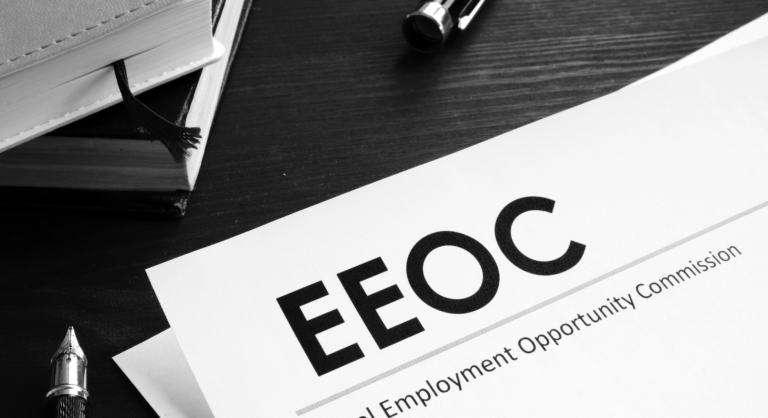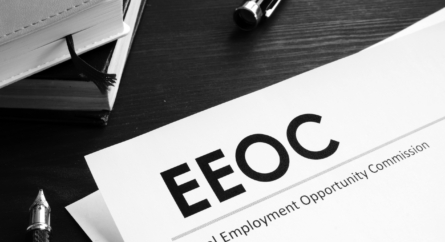Client Alert: EEOC Releases Final Guidance on Workplace Harassment
On April 29, 2024, the Equal Opportunity Commission (“EEOC”) released its final guidance Enforcement Guidance on Harassment in the Workplace (the “Final Guidance”).
As we described in our prior Client Alert announcing the proposed guidance, the Final Guidance primarily guides the reader through the fundamental elements of harassment in the workplace, provides clarifying hypotheticals, incorporates recent case law and addresses subjects of topical interest, including the increase in remote work, abortion rights, and the #MeToo movement. The EEOC’s handling of notable social touchpoints and recent case law is summarized below.
GUIDANCE CLARIFIES THE SCOPE OF SEX DISCRIMINATION OR HARASSMENT
Like the Proposed Guidance, the Final Guidance:
- Clarifies that Title VII’s protections extend to LGBTIQA+ employees. Specifically, it clarifies that workplace harassment includes repeatedly and intentionally misgendering employees or denying access to bathroom facilities that align with their gender identity.
- Reminds employers that discrimination and harassment based on “sex” includes harassment based on pregnancy, childbirth, and “related medical conditions,” which include employees’ decisions related to contraception and abortion.
The Final Guidance adds several additional hypotheticals illustrating the breadth of prohibited activity. Some of these new hypotheticals focus on vulnerable populations and underserved communities, including teen workers and survivors of gender-based violence.
In response to public comments that the Proposed Guidance infringed on free speech and religious rights, the EEOC declines to use the Final Guidance to discuss this in detail. Instead, the EEOC states that the interplay between religion-based rights and free speech protections with harassment prohibitions are “fact-specific” concerns and will be considered on a “case-by-case basis.”
GUIDANCE ADDRESSES HARASSMENT IN A REMOTE WORK ENVIRONMENT
Like the Proposed Guidance, the Final Guidance:
- Clarifies that conduct in a virtual work environment, including electronic communications using private phones, computers or social media accounts, can contribute to a hostile work environment if they impact the workplace. The EEOC states that, for example, an employee who is the subject of ethnic epithets posted on a coworker’s personal social media page could be subjected to a hostile work environment if the employee is directly exposed to the post or other coworkers see the post and discuss it at work.
In response to public comments requesting clarification on the scope of prohibited conduct occurring outside of the workplace, the EEOC states in the Final Guidance that conduct occurring outside the workplace, including on social media, which does not target the employer or its employees and is not brought into the workplace generally will not contribute to a hostile work environment.
GUIDANCE UPDATES ANTI-HARASSMENT POLICY REQUIREMENTS
Like the Proposed Guidance, the Final Guidance states that a harassment and discrimination policy should be widely disseminated, comprehensible to workers, and include:
- A definition of the prohibited conduct;
- A requirement that supervisors report harassment;
- Multiple avenues for reporting harassment;
- A statement that “[c]learly identifies accessible points of contact” for reporting purposes, including contact information; and
- An explanation of the complaint process, including “adequate” anti-retaliation and confidentiality protections, and “prompt and effective” investigations and corrective action.
The Final Guidance also includes a “non-exhaustive” list of the elements of an effective training: an overview of the employer’s anti-harassment policy and complaint process; examples of prohibited harassment; information on rights for those who witness, experience, or report harassment; and “clear instructions” for supervisors and managers on how to “prevent, identify, stop, report, and correct harassment.” The EEOC states that training should be “tailored” to the workplace and workforce, provided on a “regular basis” to all employees, and provided in a “clear, easy-to-understand style and format.”
Employers should review the Final Guidance in full to ensure that they make the necessary adjustments to their policies and training programs as recommended by the Final Guidance.
Categorized: Harassment, Workplace
Tagged In: abortion rights, anti-harassment policies, remote work, sex discrimination, Title VII protections










